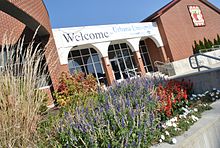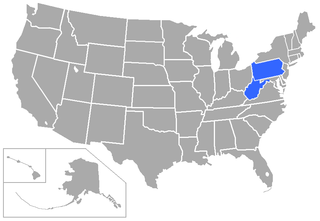
The West Virginia Intercollegiate Athletic Conference (WVIAC) was a collegiate athletic conference which historically operated exclusively in the state of West Virginia, but briefly had one Kentucky member in its early years, and expanded into Pennsylvania in its final years. It participated in the Division II ranks of the National Collegiate Athletic Association (NCAA), originally affiliated in the National Association of Intercollegiate Athletics (NAIA) until 1994, but held its final athletic competitions in spring 2013, and officially disbanded on September 1 of that year. Its football-playing members announced in June 2012 that they planned to withdraw to form a new Division II conference at the end of the 2012–13 season; this led to a chain of conference moves that saw all but one of the WVIAC's members find new conference homes.

The Mid-States Football Association (MSFA) is a college athletic conference affiliated with the NAIA. Member institutions are located in Illinois, Indiana, Iowa, and Michigan. The MSFA was organized in 1993, and on-field competition began in 1994. The MSFA is divided into two leagues, the Mideast and the Midwest.

The Great Lakes Valley Conference (GLVC) is a college athletic conference affiliated with the National Collegiate Athletic Association (NCAA) at the Division II level. Its fourteen member institutions are located in the U.S. states of Illinois, Indiana, Iowa, and Missouri. There are also four associate members who participate in sports not sponsored by their home conferences.

Kentucky Wesleyan College (KWC) is a private Methodist college in Owensboro, Kentucky. Fall 2018 enrollment was 830 students.

Lewis University is a private Lasallian university in Romeoville, Illinois. It enrolls around 6,500 students in more than 80 undergraduate programs, 35 graduate programs, and accelerated programs for working adults.
Indiana University Southeast is a public university in New Albany, Indiana. It is a regional campus of Indiana University.
McKendree University (McK) is a private university in Lebanon, Illinois. Founded in 1828 as the Lebanon Seminary, it is the oldest college or university in Illinois. McKendree enrolls approximately 1,960 students representing 25 countries and 29 states. In the undergraduate program, on average there are 51% females and 49% males. The institution remains affiliated with the United Methodist Church. The school was renamed McKendree University beginning in the 2007–08 academic year. McKendree University comprises a College of Arts and Science, a School of Business, a School of Health Professions, and a School of Education.
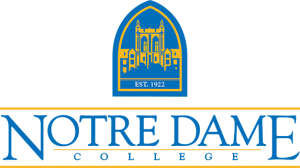
Notre Dame College is a private Roman Catholic college in South Euclid, Ohio. Established in 1922 by the Sisters of Notre Dame as a women's college, it has been coeducational since January 2001. The Sisters of Notre Dame ended their sponsorship of the college in 2023. Notre Dame College offers 30 majors and individually designed majors and confers undergraduate and graduate degrees through five academic divisions. The college had a total enrollment of 1,106 undergraduate students in fall 2020. The 48-acre (19.4 ha) main academic and residential campus is located 10 miles (16 km) east of Cleveland in South Euclid.

The Great Lakes Football Conference (GLFC) began operations in the 2006 season, with six institutions competing. After the 2011 season the remaining institutions moved into the Great Lakes Valley Conference. A previous incarnation of the conference was disbanded after the 1999 season.

The American Mideast Conference (AMC) was an affiliate of the National Association of Intercollegiate Athletics that included eight member institutions in Ohio, Pennsylvania, New York, and Massachusetts. Founded in 1949, it was known as the Mid-Ohio League, and named the Mid-Ohio Conference from 1962 until 1998, when it adopted its final moniker. The name change was the first step in a multi-phase expansion that extended the conference into states beyond Ohio before the league was eventually disbanded in 2012.

Oakland City University (OCU) is a private university affiliated with the General Baptist Church and located in Oakland City, Indiana. It is the only General Baptist Church-affiliated college or university in the United States. Founded in 1885, it has slowly grown to the present student enrollment of about 1,200 on the main campus and, counting all sites, about 2,000 total.
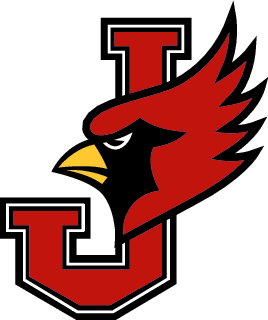
The William Jewell Cardinals women's soccer team represents William Jewell College and competes in the Great Lakes Valley Conference (GLVC) of NCAA Division II. Playing their home games at Greene Stadium on the campus of William Jewell College in Liberty, Missouri.

The Lindenwood Lions and Lady Lions are the intercollegiate athletic teams that represent Lindenwood University, located in St. Charles, Missouri, in intercollegiate sports as a member of the NCAA Division I ranks, primarily competing in the Ohio Valley Conference for most of its sports since the 2022–23 academic year.

The Kentucky Wesleyan Panthers are the athletic teams that represent Kentucky Wesleyan College, located in Owensboro, Kentucky, in intercollegiate sports as a member of the Division II level of the National Collegiate Athletic Association (NCAA).

The Southwest Baptist University Bearcats football program represents Southwest Baptist University in college football and competes in the Division II level of the National Collegiate Athletics Association (NCAA). In 2014, Southwest Baptist became a football-only member of the Great Lakes Valley Conference and remains a football-only member through the 2018–19 school year, after which it will become a full GLVC member. Prior to this SBU was in the Mid-America Intercollegiate Athletics Association from 1988 to 2007 and 2012 to 2013, the rest of the athletic programs are in the MIAA. SBU's home games are played at Plaster Stadium in Bolivar, Missouri.
The Heartland Collegiate Conference (HCC) was an NCAA Division II athletic conference that operated from 1978 to 1990. It was formed in June 1978 as the successor to the Indiana Collegiate Conference (ICC), after the ICC made up for membership losses by adding institutions from Ohio and Kentucky.

The Great Midwest Athletic Conference (G-MAC) is a college athletic conference affiliated with the National Collegiate Athletic Association (NCAA) at the Division II level. It was named the 24th NCAA Division II conference and operates in the Great Lakes and East South Central States regions of the United States. The G-MAC began conference play in the 2012–13 academic year hosting 12 championships and continued to work through the educational assessment program. The conference received approval and became an active Division II conference in 2013–14, hosting 17 championships.
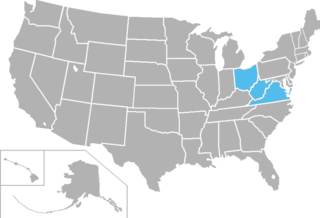
The Mountain East Conference (MEC) is a college athletic conference affiliated with the National Collegiate Athletic Association (NCAA) at the Division II level and officially began competition on September 1, 2013. It consists of 11 schools, mostly in West Virginia with other members in Maryland and Ohio.
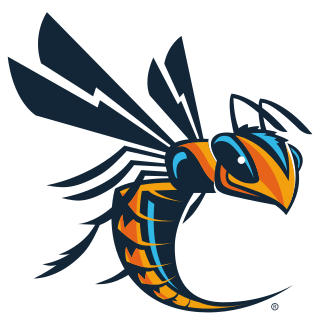
The Cedarville Yellow Jackets represent Cedarville University in intercollegiate sports. The Yellow Jackets compete at the NCAA Division II level as member of in the Great Midwest Athletic Conference (G-MAC) and also hold membership with the National Christian College Athletic Association (NCCAA). The official school colors are blue and gold. Men's sports include baseball, basketball, cross country, golf, soccer, tennis and indoor track and field, and outdoor track and field. Women's sports include basketball, cross country, soccer, softball, tennis, indoor track and field, outdoor track and field, and volleyball.
The 2020–21 NCAA Division II football season was the component of the 2020 college football season organized by the NCAA at the Division II level in the United States. Due to the COVID-19 pandemic, only a few games were played during the traditional fall season. For other teams that chose to play during the 2020–21 school year, the regular season began on February 27, 2021, and culminated on April 25.
